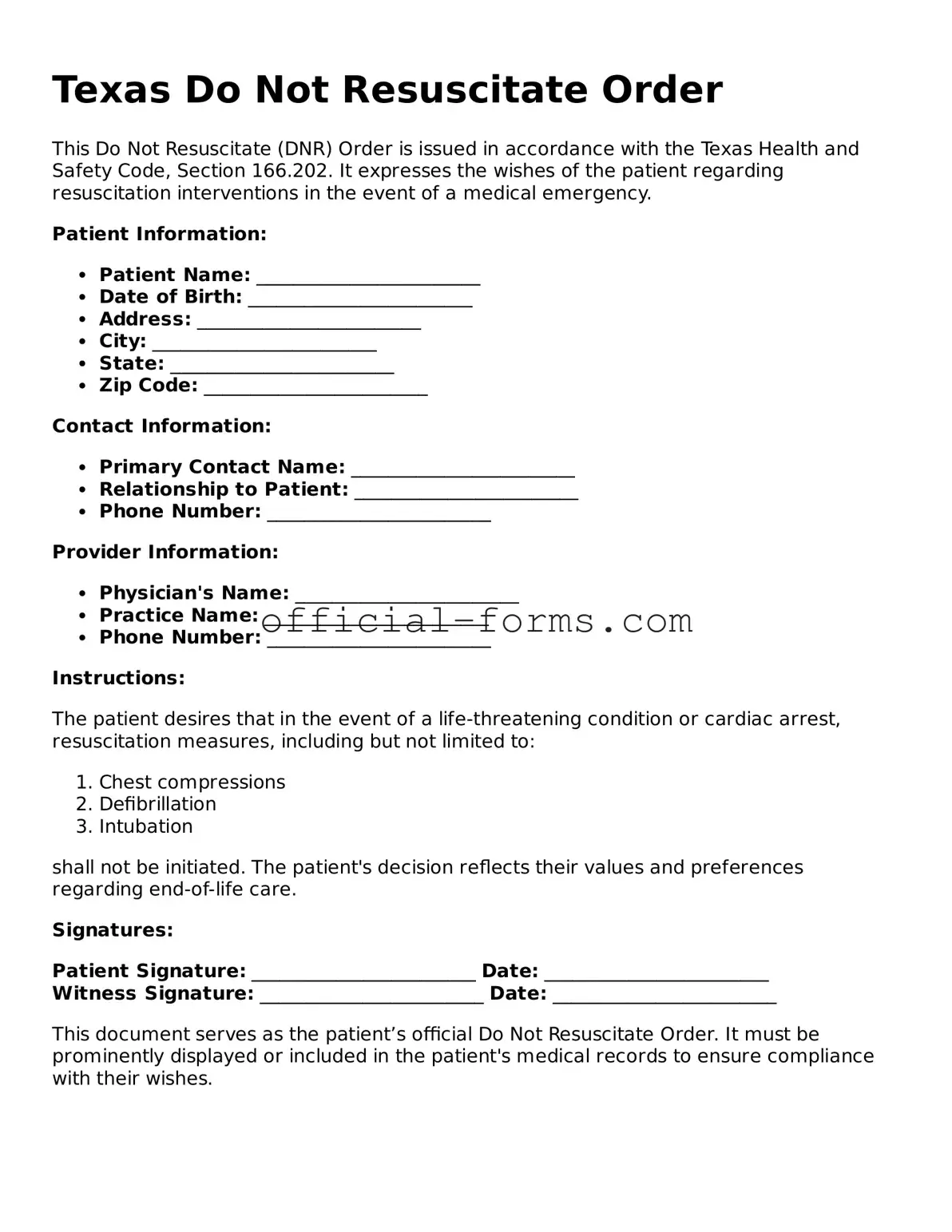Completing a Texas Do Not Resuscitate Order (DNR) form requires careful attention to detail. One common mistake is failing to properly identify the patient. It is essential to include the full name, date of birth, and any other identifying information. Omitting this information can lead to confusion and may invalidate the order.
Another frequent error involves not obtaining the necessary signatures. The DNR form must be signed by the patient or their legal representative. If the required signatures are missing, medical personnel may not honor the DNR wishes. Always ensure that all parties involved understand their roles in the signing process.
Some individuals overlook the importance of reviewing the form for completeness. Each section must be filled out accurately. Leaving any part blank or providing unclear information can create complications during a medical emergency. Double-checking the form can prevent misunderstandings later.
Misunderstanding the implications of a DNR order is also a mistake people make. Some may believe that a DNR means no medical care at all. In reality, a DNR specifically addresses resuscitation efforts, while other treatments can and should continue. Clarifying this distinction is crucial for all involved.
Another common oversight is not discussing the DNR order with family members. Open communication about the patient's wishes can help avoid confusion and conflict during critical moments. Failing to have these discussions can lead to family disputes when the time comes to act on the DNR order.
Additionally, people often neglect to keep the DNR form accessible. It should be placed in a location where it can be easily found, such as with other important medical documents or on the refrigerator. If the form is not readily available, medical personnel may not be aware of the patient's wishes during an emergency.
Some individuals mistakenly believe that once the DNR form is completed, it is permanent. In fact, the order can be revoked or modified at any time. Keeping an open line of communication with healthcare providers about any changes is essential to ensure that the DNR order reflects the current wishes of the patient.
Lastly, failing to review and update the DNR order periodically can lead to issues. As health conditions change, so may a person's preferences regarding resuscitation. Regularly revisiting the DNR form ensures that it remains aligned with the patient's current wishes and health status.
